Given how ubiquitous 3D printers and smart home devices are today, it’s not uncommon to find them under the same roof.
Bambu Lab and Home Assistant have become household names when it comes to fast and reliable 3D printers and IoT or smart home control hubs respectively.
If you want to streamline your 3D printing experience even more, it’s quite simple to get the two talking and to access your printer directly from Home Assistant. Whether it’s to simply display information in a central place or to carry out an elaborate set of actions and integrations, the two make a great duo.
In this article, we’ll cover what Bambu Lab printers and Home Assistant are, why you might want to connect them, and how you can go about this process.
What Are They?
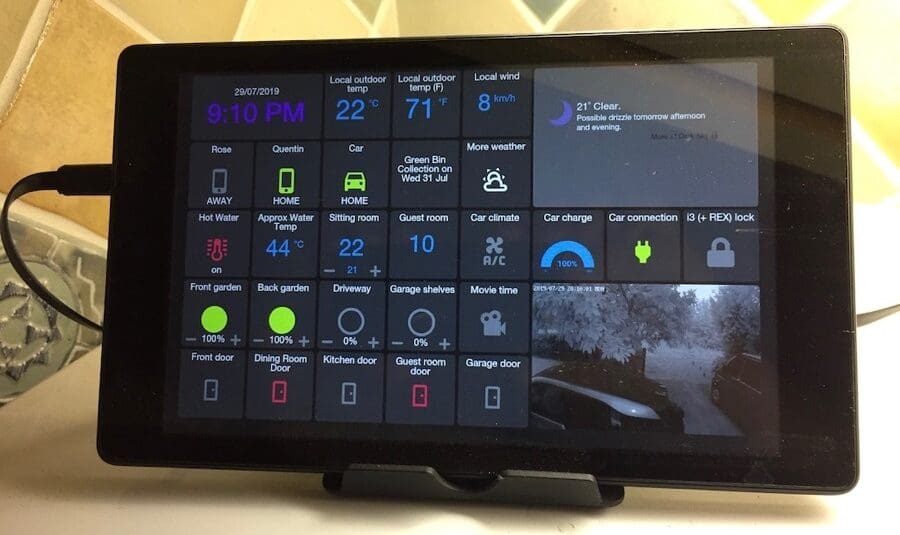
If you haven’t already heard of them, Bambu Lab makes ultra-fast and ultra-popular 3D printers for the modern market, some of which include the speedy and plug-and-play X1C, the compact and accessible A1 Mini, and the more budget-friendly but still worthwhile P1P. These printers have gained loads of popularity in recent years, becoming a common sight in the homes of makers, tinkerers, and the like.
Bambu’s printers already contain vast networking functionality and connectivity out of the box, meant to be utilized in Bambu’s cloud ecosystem. With that being said, this also has the side effect of providing a great base for an IoT platform, such as Home Assistant, to utilize.
Home Assistant, as mentioned, is free and open-source IoT software that serves as a central hub for smart home devices on your local network. This is in contrast to the cloud-based and closed approach of many IoT and smart home systems, and Home Assistant usually runs directly off a small computer such as a Raspberry Pi. It allows managing various devices such as cameras, speakers, lights, and of course, 3D printers!
Let’s take a closer look at why it can be useful to connect both setups.
Why Do It?
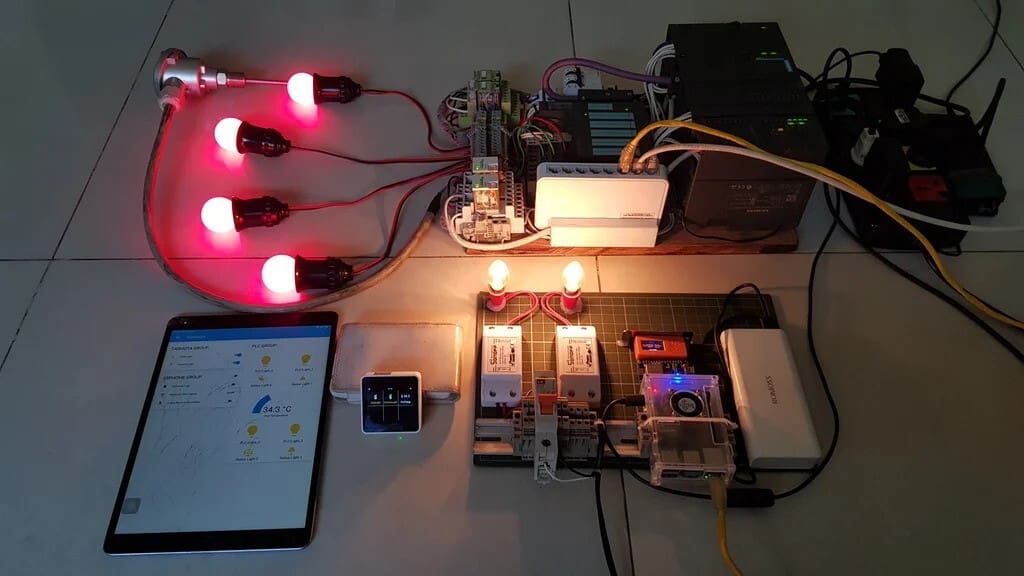
Connecting your Bambu printer to your Home Assistant setup means that the device can be easily monitored and controlled from the central dashboard – the main benefit of a Home Assistant setup!
With an integration such as this one, you can monitor plenty of data collected by your printer. This can include fan speeds, temperatures, current print statistics, AMS information, live printer camera views, and more!
But you’re not just limited to watching your data, you can also command the printer to carry out certain tasks. You can pause, resume, or stop the current print, toggle any lights if equipped, and view printer diagnostics… and the list goes on.
If you’ve ever used the Bambu Handy app on your smartphone, this is pretty much the same idea. This integration can allow for most of the functionality the app provides, but all contained within your local network, which can be a big plus if privacy is a concern.
One of Home Assistant’s most beloved features is the ability to add automations between different devices. For example, your printer could notify you that it needs more filament by changing the color of a light, or it could automatically start or stop prints based on the readings from a smart humidity sensor. The possibilities are endless!
The Options & What You'll Need
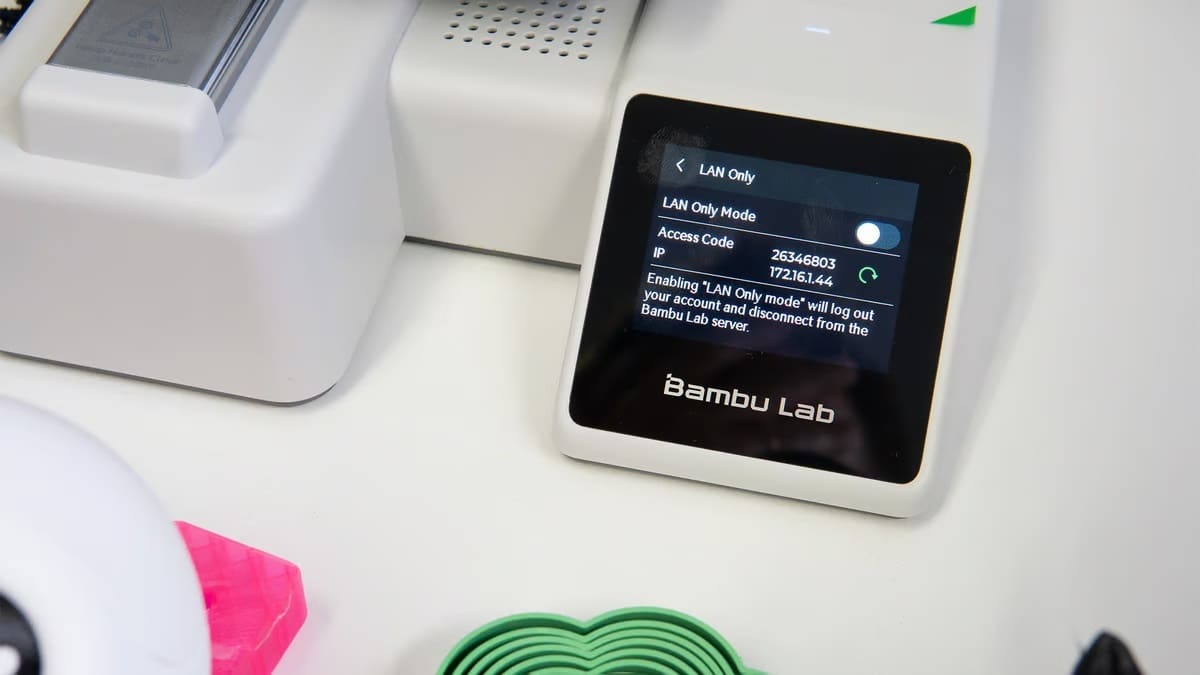
There are different ways to connect Bambu Lab printers to Home Assistant, such as by utilizing MQTT/NodeRed. This method associates your printer and Home Assistant hub through a traditional MQTT connection on your local network.
However, in this article, we’ll focus on the ha-bambulab integration by Greg Hesp, as it’s versatile and widely supported. It allows for optionally connecting through Bambu’s existing cloud ecosystem – as well as boasts an easier setup process – while retaining easy access to lots of data and printing integrations.
Through this method, Home Assistant can connect to your printer either through the cloud (via Bambu) or through your local network, bypassing Bambu’s servers entirely. Connecting via the local network may be a bit trickier to pull off, but it may end up being the more reliable option, keeping your data out of the cloud (if that’s something that concerns you).
Additionally, a cloud connection won’t work if you use two-factor authentication for your Bambu account, have signed up with a passwordless social media account, or use LAN Only mode on your printer.
What You’ll Need
To connect your Bambu Lab 3D printer to Home Assistant via the ha-bambulab integration, you’ll need:
- A Bambu Lab 3D printer (connected to the same Wi-Fi network as your Home Assistant setup).
- Home Assistant.
Our tutorial will start with the assumption that you’ve already got Home Assistant and your Bambu Lab 3D printer up and running individually.
Keep in mind that there might be slight differences in setup depending on your printer model. For example, the P1 and A1 series require a local connection for a live camera feed to be available in Home Assistant (although this can also be supplemented with a cloud connection if you’d like). The X1 series printers also require an additional setting to be turned on (LAN Mode Liveview) for said functionality.
Get Connected
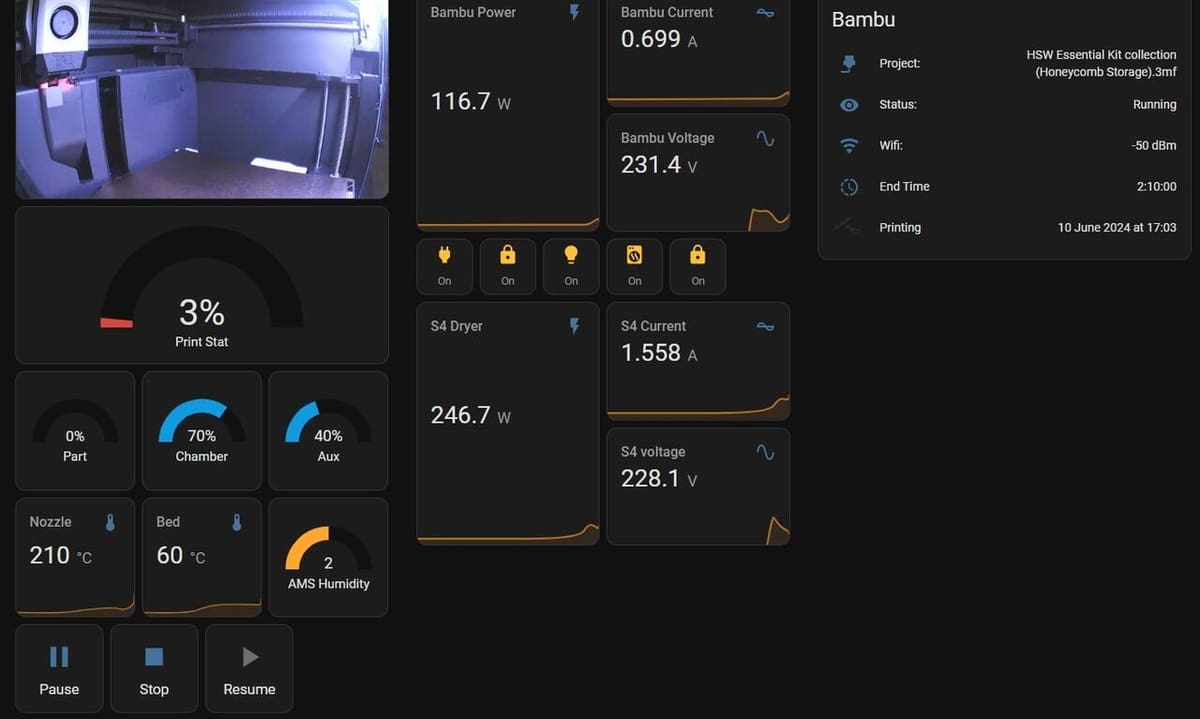
While we’ll be following the steps that involve the ha-bambulab integration, many steps are identical between the two approaches. Let’s get right into it!
Installing HACS
Home Assistant Community Store, or HACS, is required for the ha-bambulab integration to function. Because the process is rather lengthy and not the main goal of this tutorial, you can find a guide on how to install HACS here.
In a nutshell, you’ll install HACS into your Home Assistant hub and from there, you’ll have easy access to a huge amount of community-made custom integrations and elements for Home Assistant.
Install ha-bambulab
Once HACS is set up, you can install the actual integration! The streamlined way would be to follow this link from any device on the same network as your Home Assistant install. This installs the integration automatically. However, if that doesn’t work:
- Head to HACS within Home Assistant, click on the three dots in the top right, and select the “Custom repositories” option.
- Add the needed custom repository in the “Integration” category by entering “greghesp/ha-bambulab” into the “Repository” box and selecting “Integration” under “Category”.
- After saving, you should see the integration, aptly named “Bambu Lab”, in your main HACS menu towards the top; download and install it. (If you don’t see it, try searching “Bambu Lab” in the search box near the top.)
- While not a requirement, it’s recommended to restart Home Assistant at this point to ensure the integration will be able to discover your printer in the next steps.
Add Your Printer
- In Home Assistant’s settings, visit the “Devices and Services” section.
- Click the “Add Integration” button to search for and add your newly installed integration, which you can again find under the name “Bambu Lab”.
- You should now be able to choose between a cloud and a local connection, as mentioned earlier. Choose whichever you prefer.
- Provide login details to your Bambu Lab account (keep in mind the limitations discussed earlier) if needed.
- If choosing a local connection (or optionally while also using a cloud connection), you’ll be required to provide your printer’s IP address and access code. The process of finding these is very similar to that of setting up Bambu Studio’s LAN-Only mode.
That’s it! Home Assistant should now be able to talk to your printer. Read on for some inspiration on how to best utilize this new integration and some common pitfalls in the process.
Tips & Tricks
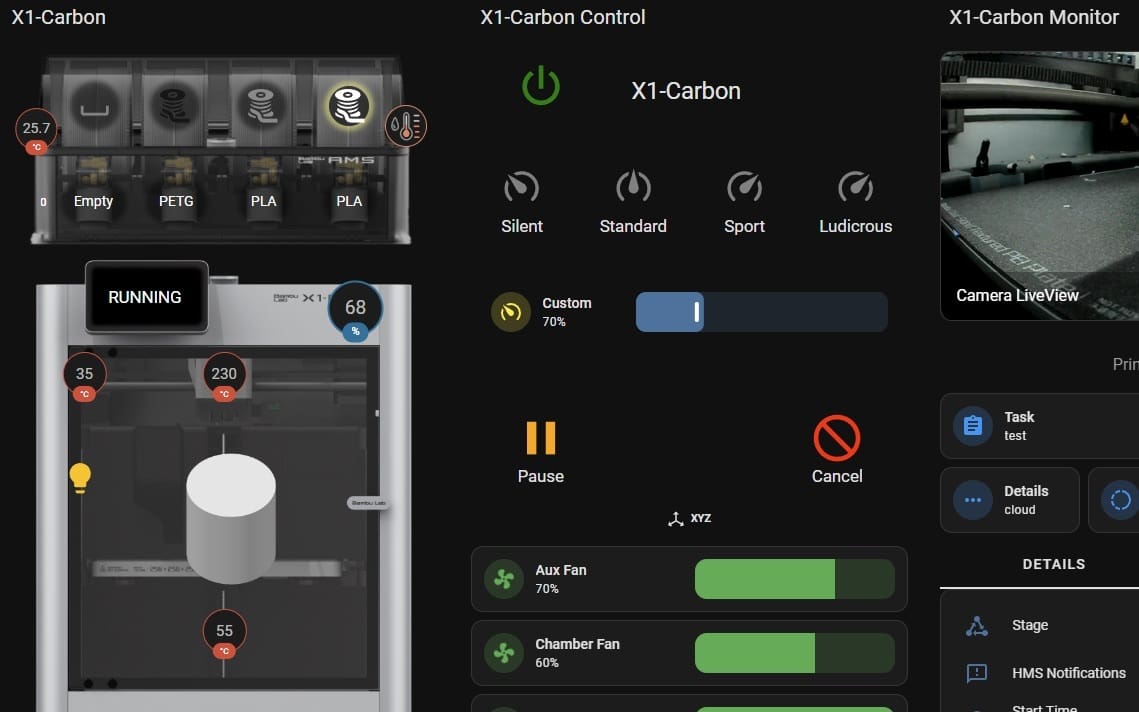
Integrating your Bambu printer to Home Assistant is cool, but it’s not very useful without a way to view information or interact with the printer.
Fortunately, you can easily make awesome-looking and very functional custom dashboards to display your printer’s data! Users have already shared their dashboard setups to take inspiration from, or you could alternatively make your own entirely. WolfwithSword allows you to generate your own custom YAMLs to make sleek dashboards for your printer.
If automations are more your thing, there are many possibilities in this department! You can create different automations that trigger on many possible events and command other devices in your Home Assistant network, such as changing the color of LEDs in or around the printer based on its status. Automations can be easily added in the integration configuration, located in “Devices and Services > Bambu Lab”.
If you’re having issues getting things functioning properly, especially with getting your printer’s camera to show up (if selected), all hope is not lost! Try restarting your printer and Home Assistant, enabling “LAN Mode Liveview” if possible (this toggle is present on X1 models), and reconfiguring your printer as a local connection if needed.
License: The text of "Integrate Bambu Lab 3D Printers to Your Home Assistant" by All3DP is licensed under a Creative Commons Attribution 4.0 International License.
